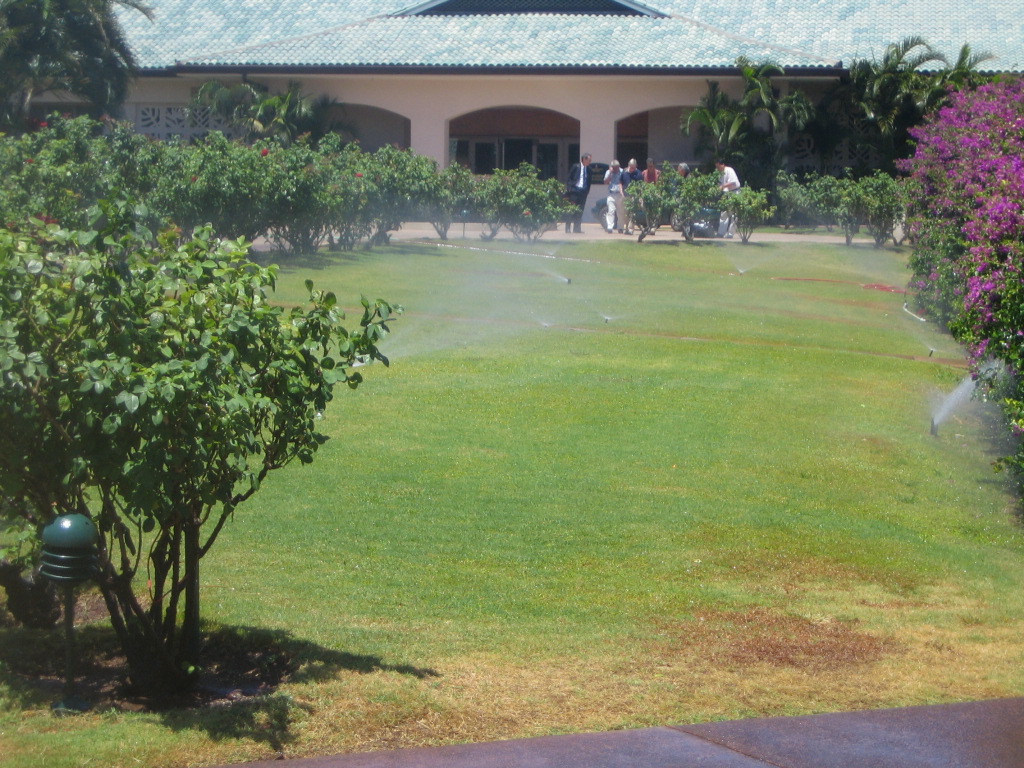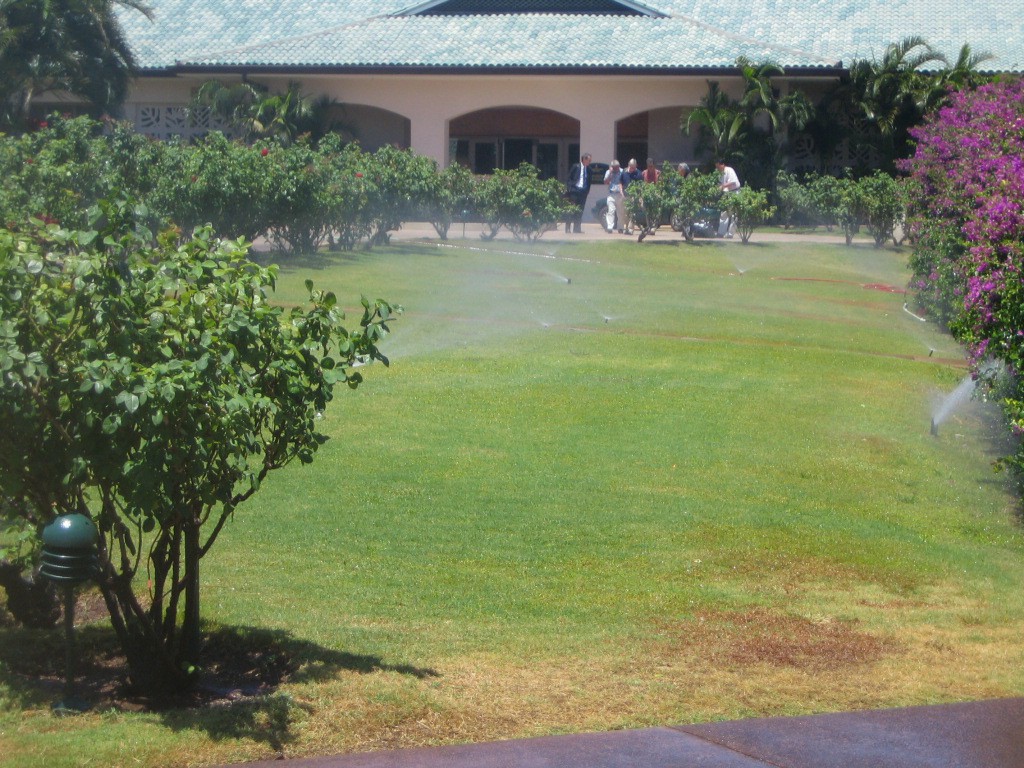Posted 08/28/2012
The Native Hawaiian Legal Corporation has won again.
On August 24, the Intermediate Court of Appeals found that the citizens’ group Lanaians for Sensible Growth (LSG) — a client of the NHLC — can appeal a 2010 Land Use Commission decision that allows Castle & Cooke Resorts (CCR) to irrigate its Manele Bay golf course with water drawn from a high-level aquifer on the island.
The case goes back to 1989, when the LUC placed a condition (Condition No. 10) on the redistricting 139 acres at Manele. Condition 10 prohibited the use of potable water from the high-level aquifer for irrigation. Concerned that CCR was violating that condition, the LUC in 1993 ordered CCR to show why the land should not revert to the Rural and Agricultural districts.
CCR argued that while it was using water from the aquifer for irrigation, it was not using potable water, and was, therefore, not violating Condition 10. The commission disagreed and, in a May 1996 order, found that CCR had violated the condition. The order banned the company from using any water from the high-level aquifer for irrigation.
CCR appealed to the circuit court, which reversed the LUC’s decision. The court called the conclusion that CCR had violated Condition 10 “arbitrary, capricious, and clearly erroneous.” Lanaians for Sensible Growth and the LUC then appealed to the Supreme Court.
The higher court sided with the circuit court and ordered the LUC to determine whether CCR had, in fact, used potable water from the high level aquifer in violation of Condition 10. The LUC was to either clarify its findings or hold further hearings to make that determination.
The LUC held more hearings in June 2006 to incorporate new data and Maui county policies, but closed the hearing before LSG had a chance to present its case. It also stopped short of determining whether CCR had violated Condition 10. Instead, parties to the case entered into settlement discussions, which failed.
Then in 2007, CCR and the state Office of Planning (OP) submitted motions to amend Condition 10, sidestepping the violation issue altogether. Both motions would have allowed CCR to use up to 650,000 gallons a day of “non-potable” water from the aquifer for irrigation. The OP’s motion would have also required CCR to conduct studies to determine the efficiency of its water distribution system and any impacts golf course irrigation might have on domestic water supplies.
After one brief hearing, the LUC decided in January 2010 to vacate its cease and desist order, deny the OP’s motion, and grant CCR’s motion with some modifications.
On February 24, LSG appealed the LUC’s decision in First Circuit Court, arguing that it ignores the Supreme Court’s instruction to determine whether CCR was using potable water from the high-level aquifer in violation of Condition 10.
After a hearing on November 23, 2010, circuit judge Karl Sakamoto ruled on March 9, 2011 that the court lacked jurisdiction to review the case. His decision was “based on the premise that when the case was remanded to the LUC, the circuit courts were divested of further jurisdiction over the matter,” the ICA found.
In its order vacating Sakamoto’s ruling, the ICA found that section 91-14 of Hawai`i Revised Statutes gives the lower court jurisdiction to hear the case.
Among other things, the section gives the circuit court the right to reverse or modify an agency action that is arbitrary, capricious, or involves an abuse of discretion and, therefore, may prejudice the substantial rights of a petitioner in a contested case.
In light of the ICA’s decision, “LSG will seek a final ruling on the merits of its appeal,” NLHC attorney Alan Murakami says.
“The judge [Sakamoto] clearly stated on the record, had he had jurisdiction, he would remand the case to the LUC to make the determination specified by the Supreme Court,” he says. “It’s great. Hopefully we can accelerate things. It’s been 16 years.”
In an email to Environment Hawai`i, Murakami quotes Sakamoto’s statements during oral arguments on November 23, 2010:
“It does not appear from the record that LUC followed its own procedures established in 2006. Further, 91-9(c) provides in pertinent part opportunity shall be afforded all parties to present evidence and argument on all issues involved. It does not appear from the record that [LSG] was afforded a full and fair opportunity to have its evidence heard and considered post remand. Therefore, assuming this Court did have jurisdiction to hear this matter as an agency appeal pursuant to 91-14, this Court would have remanded to the LUC with instructions to restart the post Hawaii supreme court remand proceeding as originally instructed in Lanai Company, Inc. [emphasis added].” (Lanai Company, Inc. merged with CCR in 2000.)
Given that it’s been at least six years since the hearings on the alleged violation closed, Sakamoto recommended that any further hearings “should have all parties having a full and fair opportunity to present their positions.”
CCR hasn’t decided whether it will appeal the ICA’s decision, says its attorney, Brett Tobin.
LUC executive director Daniel Orodenker says he hasn’t discussed the decision with anyone yet.
(For more background on this case, read our February 2010, December 2007, and February 1994 issues, all available in our archives.)



Leave a Reply